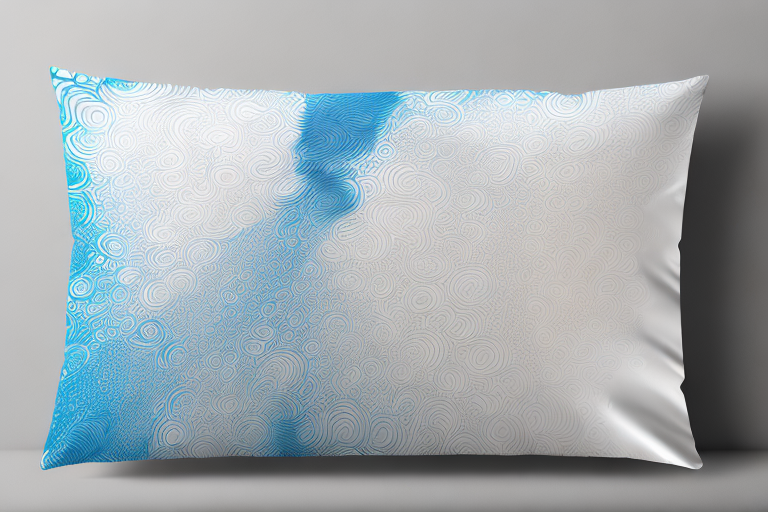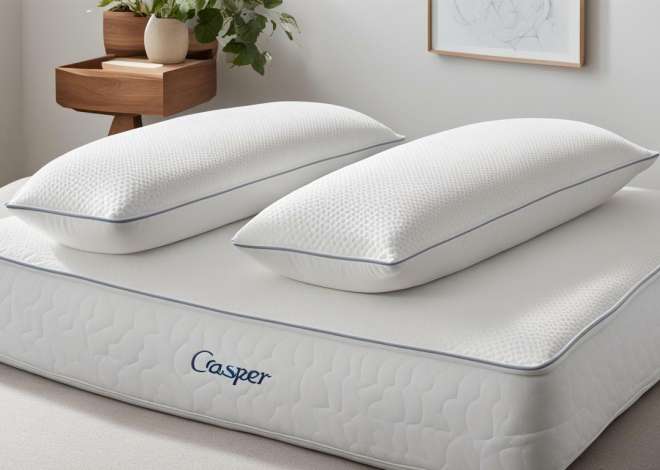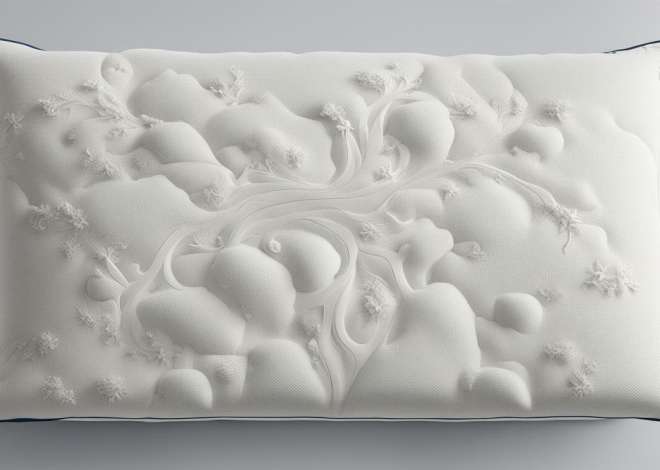
Is polyester or silk better for pillowcase?
When it comes to choosing a pillowcase, the material it’s made from plays a crucial role in how comfortable you are while you sleep. Polyester and silk are two of the most popular options available, but which one is better? In this article, we’ll compare the benefits and drawbacks of both materials to help you decide which one is right for you.
What is the difference between polyester and silk pillowcases?
Silk pillowcases are made from the natural fibers of silkworms, while polyester pillowcases are made from synthetic materials. Silk is a more luxurious and expensive option, while polyester is more affordable and widely available. Both materials have unique properties that make them appealing to different people.
One of the main benefits of silk pillowcases is that they are hypoallergenic and gentle on the skin, making them a popular choice for those with sensitive skin or allergies. Silk also has natural moisture-wicking properties, which can help keep your skin and hair hydrated while you sleep. On the other hand, polyester pillowcases are often more durable and easier to care for than silk, as they can be machine-washed and dried without special care instructions. However, they may not provide the same level of comfort and luxury as silk.
The benefits of using a polyester pillowcase.
Polyester pillowcases are often praised for their affordability and durability. They are easy to find in stores and online, and they can withstand heavy use without wearing down. They are also less likely to wrinkle or shrink in the wash, making them a low-maintenance option for those who want a fuss-free bedding solution.
In addition to their affordability and durability, polyester pillowcases are also hypoallergenic, making them a great choice for people with allergies or sensitive skin. Unlike natural materials like cotton or silk, polyester does not trap dust, pollen, or other allergens, which can cause irritation and discomfort. This makes polyester pillowcases a practical and comfortable option for anyone looking to improve their sleep quality.
The benefits of using a silk pillowcase.
Silk pillowcases are known for their smooth, soft texture that feels gentle against the skin. They are hypoallergenic and breathable, which means they are less likely to cause skin irritation or trap heat and sweat while you sleep. Additionally, silk has natural moisture-wicking properties that can help keep your skin hydrated and prevent dryness and wrinkles.
How does a silk pillowcase affect hair and skin health?
People who swear by silk pillowcases claim that they help reduce hair breakage and prevent bedhead. The smooth texture of silk allows hair to glide over the pillowcase rather than getting caught and pulled, which can lead to split ends and knots. Silk is also said to be gentler on the skin, reducing the likelihood of acne, fine lines, and wrinkles.
How does a polyester pillowcase affect hair and skin health?
While polyester doesn’t have the same natural benefits as silk, it can still be a good choice for people with sensitive skin. Unlike materials like cotton or wool, polyester is less likely to trap dust, dirt, or bacteria. This means that it may be less irritating to people with allergies or skin conditions like eczema.
Are polyester or silk pillowcases more durable?
Polyester pillowcases are generally considered to be more durable than silk because they are more resistant to wear and tear. Polyester fibers are also stronger than silk fibers, which means they are less likely to break or fray over time. However, silk pillowcases can last for many years if they are cared for properly.
How to choose the right pillowcase material for your needs.
When choosing between silk and polyester pillowcases, it’s important to consider your specific needs and priorities. If you want a low-maintenance option that is affordable and easy to find, polyester may be the way to go. If you prioritize luxury and comfort and are willing to invest more money, silk may be the better choice.
How to care for your polyester pillowcase.
To keep your polyester pillowcase looking and feeling great, it’s important to wash it regularly in cool or lukewarm water with mild detergent. Avoid using bleach or fabric softeners, as they can damage the fibers of the material. Tumble dry on low or air dry on a flat surface to prevent shrinkage or misshapen pillows.
How to care for your silk pillowcase.
Silk pillowcases require a bit more care than polyester ones, as they are more delicate and prone to damage. Hand washing or using the delicate cycle on your washing machine with cold water and mild detergent is recommended. Avoid twisting or wringing out the pillowcase, as this can stretch or warp the fibers. Hang dry or lay flat to prevent shrinkage or misshapen pillows.
Can a pillowcase material impact the quality of your sleep?
The material of your pillowcase can have a subtle impact on the quality of your sleep. While research on this is limited, many people report experiencing less skin irritation or discomfort when they switch to a silk pillowcase. Additionally, the smooth texture of silk may be less likely to cause friction against your hair, leading to less frizz and tangles. Ultimately, the best way to get a good night’s sleep is to find a pillowcase that feels comfortable and supportive to you, regardless of the material it’s made from.
Comparing the price point of polyester versus silk pillowcases.
One of the biggest differences between polyester and silk pillowcases is the price. Polyester is generally much more affordable, with prices ranging from $10 to $30 depending on the brand and quality. Silk, on the other hand, can cost anywhere from $40 to $200 or more depending on the grade of silk used, the thread count, and other factors. While silk may be a luxury for some, others find it to be a worthwhile investment for its benefits and durability.
Does the texture of a pillowcase material affect sleep comfort?
The texture of your pillowcase can play a role in how comfortable you feel while you sleep. Polyester has a smoother, slicker texture that some people may find too slippery or cold for their liking. On the other hand, silk has a soft, plush texture that can feel cozy and inviting. Ultimately, it’s a matter of personal preference and what feels best to you.
Should you invest in a silk or polyester pillowcase?
Whether you choose to invest in a silk or polyester pillowcase depends on your budget, lifestyle, and priorities. If you value affordability and durability, polyester may be the best option for you. If you prioritize luxury and comfort and are willing to invest more money, silk may be worth the splurge. Consider your sleeping habits, skin sensitivity, and hair type when making your decision.
The environmental impact of choosing polyester or silk for your bedding.
When it comes to the environmental impact of different pillowcase materials, silk is generally considered to be the more sustainable choice. Silk is made from natural fibers and is biodegradable, unlike polyester which is made from non-renewable resources and can take hundreds of years to decompose in a landfill. Additionally, silk production is typically less water-intensive than polyester production. However, it’s important to look for sustainably sourced and manufactured materials of either type to reduce your overall environmental impact.
In conclusion, both polyester and silk pillowcases have unique benefits and drawbacks. The best choice for you depends on your individual needs and preferences. Ultimately, the most important thing is to choose a pillowcase that feels comfortable and supportive to you, regardless of the material it’s made from. With proper care, both polyester and silk pillowcases can enhance your sleep and promote better skin and hair health.


